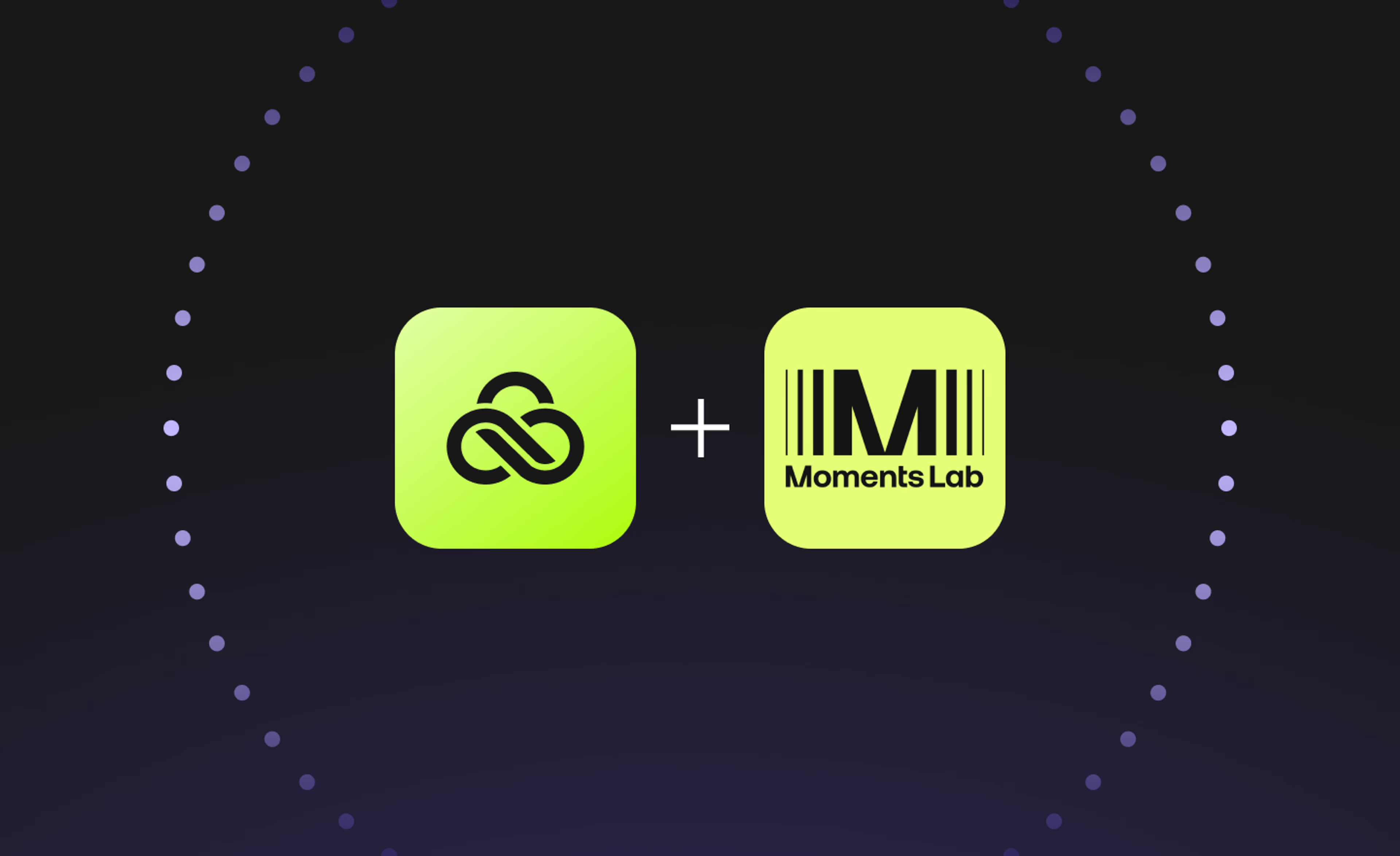Creative production
The hidden costs of post-production
April 2024
8 mins

Table of contents
Your files, faster.
Access any file instantly, anywhere. Collaborate in real-time from one always-up-to-date, secure cloud filespace.
Post-production is an ever more critical and expensive aspect of modern multi-media practices. The costs involved are, however, difficult to unbundle. In this article we explore whether and how emerging technologies offer a more cost-efficient approach to managing the post-production facility.
The real costs of post-production
The creative advancements in the post-production world for the past decade have been truly remarkable. The artistic tools that have evolved include 3D modeling, compelling visual effects, CGI, and the emergence of ultra-high-resolution video formats coupled with HDR imaging, as well as groundbreaking audio techniques. The use of tools have resulted in the most compelling multi-media productions ever created for different audience types.
Despite these tech developments, it is surprising how many modern-day post-production departments are still employing traditional creative methods, which result in high costs and inefficient working practices. Even with the arrival of the cloud many facilities are reluctant to adopt new approaches with the feeling that the old and tested workflows, in use over many years, are still fit for purpose. The “if it’s not broke, don’t fix it” mentality still discourages many people from making changes to their workflows when they are under tightly controlled budgets.
When revisiting traditional working practices within the post-production environment, especially with an emphasis on ingest and collaboration, are there alternatives such as cloud-based workflows that may now be more beneficial for cost-saving and working efficiency?
What is the traditional approach to post-production?
Post-production is a highly collaborative process that takes raw footage and creates the finished masterpiece. It includes different skilled operations from editing to coloring, special effects, and audio enhancements. The whole post-production process typically takes longer than the actual time to shoot the raw footage necessary for the finished product, whether it be a film, TV production, advert, or other multi-media production.
It is a process that has evolved over decades but begins with the production, which in current times involves a diverse range of digital cameras catching raw footage, or rushes, captured on physical SSD storage devices in many different video file formats and codecs. Once the scene is finished, the raw footage from the cameras needs to be transferred to the post-production facilities.
Most camera memory cards are expensive. Often the digital files are copied from the cards onto removable hard drives. Then the camera cards are immediately redeployed while the hard drives are shipped.
Adding up the costs
Many productions have at least two mobile RAID storage devices as an on-set repository. The cost of these devices is typically around $10K each. Adding to the complexity, some companies, like Netflix, will recommend using different hard drive manufacturers and batch numbers for resilience between each device.
Copying to hard drives is not without risk – they can fail, copies can be corrupted and logistically all the hard drives need to be collected, labeled, and often couriered to a location. Drives are shipped not only to editors but also to directors and other stakeholders in the production process. Typically Data Wranglers are responsible for the management, collection, and shipping of raw footage. In order to get the footage to everyone in the workflow, Wranglers can often work overtime late into the night, which adds to the cost of production. Adding everything up, this process generally takes an excessive amount of time and resources.
Version control
It is typical during a production that many scenes receive multiple takes. When rushes are distributed and rough cuts are initially created, it is important that everyone is working on the same file version. This is especially challenging in a distributed environment, as stakeholders tend to be globally dispersed and in different time zones.
What are the pain points of ingest?
Looking at the ingest process and how rushes are collected, copied, and shipped to various locations, all aspects need to be carefully managed, including the timing, reliability, and level of security.
It’s typical for a post-production facility to have editors that are left waiting for the rushes to arrive. And once the rushes arrive, they need to be ingested into a storage platform for editing and review. Media files are notoriously very large files. The whole ingest process can take hours just to get the data. If you take those hours spent waiting and multiply them by the number of editors you have as part of a large team, you are paying for hours of expensive overhead. Much like the purchasing and shipping of hard drives, it is an expense that is not often accounted for and routinely overlooked.
The Blue in the graph below shows in-house storage, and the fluctuations indicate when more drives are needed. Whereas, the Green indicates cloud solution storage costs if the same amount of storage is being used over the 12 week period.

What are the wasted costs when it comes to ingest?
To calculate the costs for a typical post-production house, some questions need to be posed and assumptions made:
What is a typical production?
Over what duration and how many hard drives are typically used for an average production?
Initially, you may think the codec would impact the number of drives, but hard drives are rarely filled to capacity. The number of drives used by a specific film set is usually determined on a particular day where rushes from a location are copied and shipped daily.
Relevant questions:
How many editors are typically working in a post-production house?
What is the cost of an average editor?
How much time is wasted while editors wait for rushes to be uploaded or when they cannot share files?
Typical production storage costs

Logistics and delivery – Assuming 5 days of shooting at 2 locations and hard drives being couriered daily, a total of 10 deliveries are made (when rushes need ingesting only at one point). If a typical courier service is $150, then the total cost will be $1500. However, it is not unusual for rushes to be shipped to various locations.
The approximate cost of logistics and delivery is $1500
Downtime for editors – If a typical post-production house has 10 editors, they must wait while rushes are ingested. If the rushes have been delayed by the courier, then waiting times are increased.
Month cost for ingestion
1 hour per day/video editor

If an editor is earning $60 per hour, one hour per day across 10 editors can mean a downtime loss of $600 per day, potentially over a 10-day production could be $6,000 just during the ingest process.
10 days of production can cost up to 6K waiting for ingest.
Cost of Storage – These costs do not include IT personnel to ingest the rushes, costs of runners and other support media personnel, as well as the costs of the storage hardware itself. There are often hidden costs, especially when operations do not go to plan. Delays can lead to additional costs from taxis home, overtime payments, and late-night food deliveries. The cost of stress and mental well-being of people is difficult to quantify but this is a factor in the post-production world that should be considered from a productivity perspective.
A typical post-production environment will have a NAS or SAN storage device that typically can cost $25k plus an incremental management cost for daily back-ups, archiving, and other video management processes.
The Approximate cost of NAS or SAN is $25,000
What are the alternatives?
With the uplift in adoption of IP workflows to replace SDI, accelerated by the social and economical impact of the COVID-19 pandemic, the emergence of cloud has really revolutionized how the Media & Entertainment industry approaches both live and post-production processes.
One major business transformation is that of ingest. Cloud services need reliable internet connectivity. With the advancements of bonded 4G, 5G, fiber, and LEO satellite services, communication, even in remote locations, is becoming more dependable and available. The rollout of fiber is accelerating, especially in remote and rural locations. Cameras are also increasingly able to deliver direct to cloud. Connectivity for media transfer is only going to increase as 5G proliferates.
What are the cost benefits of using cloud workflows?
The tangible cost savings are immediate.
No more purchasing, storing or shipping hard drives
No loss of time – All stakeholders involved in the production (video editors, ancillary staff, transcoders, loggers, legal, producers, directors, and VFX departments) have instant access to raw media and are immediately productive.
Intangible costs
With business transformation, there are intangible savings that are harder to measure. For example, users can experience an increase in efficiency with improved stakeholder collaboration, which can be unapparent at first glance.
Major IT savings
The cloud enables IT savings within the post-production facility themselves. Looking at a hybrid model, there is:
Smaller local storage footprint
OpEx expenditure (no hardware required)
No capital expenditure
Cost savings in ongoing admin and data management
Eliminating an in-house storage requirement will remove expenditures associated with hardware, property leases, and electricity to operate the equipment.
All the IT infrastructure can be hosted in cloud, which also removes the need for editors to be forced to co-locate in one building, thus opening a global job market with skilled personnel. A global workforce opens up new opportunities for both specialized talent and reduced labor costs.
The use of cloud changes the finance and risk model. Utilizing SaaS allows companies to scale up and down according to need and removes the need to make capital investments before taking on work. SaaS gives post-production facilities the chance to quote for work on a project basis rather than having to amortize in-house hardware costs over its lifetime, hoping for profitability.
Summary
It has always been necessary for a post-production house to consider evolving technology to ensure the business remains cost-effective and relevant. And it is imperative they start to recognize the benefits of cloud. It does not need to be total migration and cloud business transformation in one leap, but an incremental approach, beginning with a cloud ingest process for rushes, which will reap immediate payback.
Not all cost savings can be measured in dollars. Post-production can be a highly stressful industry and any working practices that can improve mental health will only be a positive contribution. Consider how adding flexibility and time-saving processes will ensure a happier and more productive workforce:
Your workforce is not confined to a single location
No more late nights data wrangling
Video editors don’t wait for files to arrive
Workflows become streamlined and more efficient
Ready for a cloud-based workflow? Start your 14-day free trial with LucidLink.
Keep reading

Creative production
Unlocking the potential of your media library with AI and real-time access
Explore how AI and real-time access make your media library searchable, actionable and ready for faster, smarter storytelling.
16 December 2025, 5 mins read

Creative production
How to build a creative workflow that really flows
Discover how to build a seamless creative workflow using practical strategies and tools. Get tips for collaboration and creative project management.
26 November 2025, 17 mins read

Creative production
Sports video editing: the complete guide for sports highlights and video editing
Learn how to create pro-level sports highlight videos with the best sports video editing software. Tips, tools and real-world workflows included.
20 November 2025, 7 mins read
Join our newsletter
Get all our latest news and creative tips
Want the details? Read our Privacy Policy. Not loving our emails?
Unsubscribe anytime or drop us a note at support@lucidlink.com.